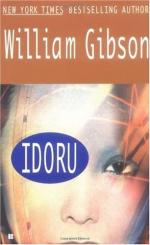|
This section contains 7,374 words (approx. 25 pages at 300 words per page) |

|
SOURCE: Rapatzikou, Tatiana. “Visualizations of Cyber-Gothic Bodies in William Gibson's Trilogy and the Art of the Graphic Novel.” Foundation: The International Review of Science Fiction 83 (autumn 2001): 73-86.
In the following essay, Rapatzikou examines William Gibson's representation of human identity in his trilogy of science fiction novels—Neuromancer, Count Zero, Mona Lisa Overdrive–and how Gibson's themes are both linked to and informed by the portrayal of the “inhuman” in comic books, particularly in the computer-generated graphic novels, Iron Man: Crash, by Mike Saenz and Batman: Digital Justice, by Pepe Moreno.
The intrusion of the mass media and information technology in both the external and the physical world of the human subjects, gives way to myriad manifestations of selfhood and multiple versions of realities (“terminal identity”).1 The electronically enhanced simulation of the human body re-introduces the issues of bodily intrusion and disorder that proliferated in the nineteenth-century gothic motif...
|
This section contains 7,374 words (approx. 25 pages at 300 words per page) |

|


